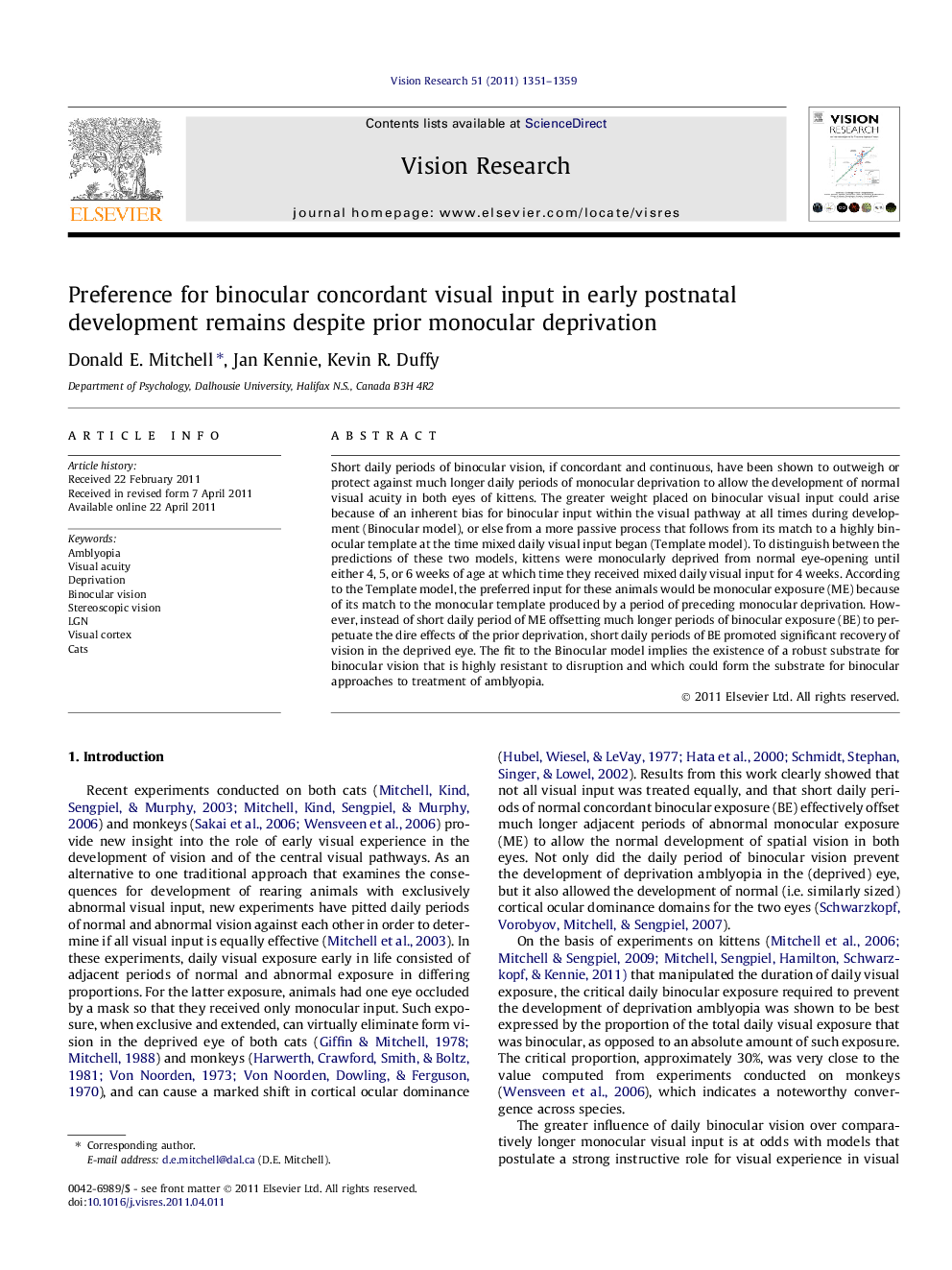| Article ID | Journal | Published Year | Pages | File Type |
|---|---|---|---|---|
| 4034311 | Vision Research | 2011 | 9 Pages |
Short daily periods of binocular vision, if concordant and continuous, have been shown to outweigh or protect against much longer daily periods of monocular deprivation to allow the development of normal visual acuity in both eyes of kittens. The greater weight placed on binocular visual input could arise because of an inherent bias for binocular input within the visual pathway at all times during development (Binocular model), or else from a more passive process that follows from its match to a highly binocular template at the time mixed daily visual input began (Template model). To distinguish between the predictions of these two models, kittens were monocularly deprived from normal eye-opening until either 4, 5, or 6 weeks of age at which time they received mixed daily visual input for 4 weeks. According to the Template model, the preferred input for these animals would be monocular exposure (ME) because of its match to the monocular template produced by a period of preceding monocular deprivation. However, instead of short daily period of ME offsetting much longer periods of binocular exposure (BE) to perpetuate the dire effects of the prior deprivation, short daily periods of BE promoted significant recovery of vision in the deprived eye. The fit to the Binocular model implies the existence of a robust substrate for binocular vision that is highly resistant to disruption and which could form the substrate for binocular approaches to treatment of amblyopia.
► Kittens show a preference for binocular over monocular input in visual development. ► We test two models, on monocularly deprived kittens for the preference. ► The Template model predicts that these kittens would prefer matched monocular input. ► The Binocular model predicts that a preference for binocular input would remain. ► The data fit the predictions of the Binocular model.
